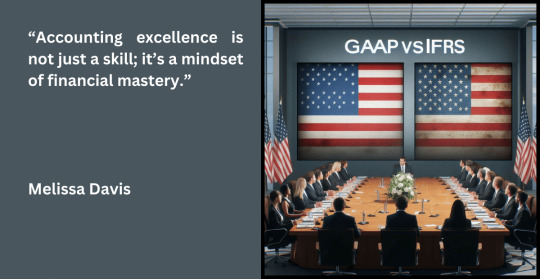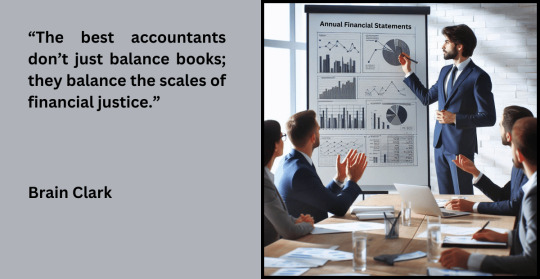#Financial Accounting Assignment Help Assignment Help
Explore tagged Tumblr posts
Text

#Accounting Help#accounting assignment help#online homework support#financial accounting homework assistance
2 notes
·
View notes
Text
Working Capital Optimization: Essential Help for Finance Assignments
Introduction: What is Working Capital?
Working capital constitutes a crucial principle in the field of finance, signifying the short-term liquidity position of a firm. It is defined as the difference between an organization's current assets—encompassing cash, inventory, and accounts receivable—and its current liabilities, including accounts payable and short-term debt. In essence, it denotes the financial resources available to the company to facilitate its daily operational needs. Effective working capital management ensures that a company can meet its operational needs and financial obligations, while also channeling available resources to facilitate growth in the company.
Every student or learner involved in finance studies or assignments particularly those that relate to working capital, must understand the factors that explain the working capital. Why? Working capital belongs to the most critical indicators of financial performance since they directly reflect the financial result, availability of funds for operations, and risks involved. Effective management of work capital can enhance or develop efficiency in the business hence enhancing the performance by the firm. For students, to understand these dynamics students are usually tasked to solve various numerical questions to gain insights into the practical financial operations of businesses.
By opting for finance assignment help, students can get to know more about the perspective of working capital optimization and other advanced techniques in the field. This means that one can seek working capital study assistance from professional experts, especially in complex working capital problems as opposed to what is found in textbooks and theories. This involves an opportunity for students to gain a greater understanding of the subject, hence exposing them to applicable strategies for succeeding in their assignments.

Working Capital Optimization: Issue Diagnosis in Details
Working capital optimization can be defined as the means and methods that are used in the management of the short-term assets and liabilities of a business with the aim of ensuring the operations of the firm are done in the most efficient and profitable manner. This also means that there is a fine line to be drawn between the need for liquid assets to meet short-term obligations and bringing down capital expenses.
As regards finance students, it may appear that working capital optimization is quite simple and quite basic as a subject however in a real sense, it is quite an elaborate and complicated subject that can make or break a business. In this regard, we shall look at why working capital optimization is important, how the companies achieve these goals and real cases where companies have demonstrated a working capital optimization impact.
Why Optimize Working Capital?
It is quite evident that working capital management is of great importance for all businesses as it influences many key performance metrics:
Liquidity: Sufficient working capital ensures that the company can perform its short-term obligations in terms of paying off suppliers and employees.
Profitability: Proper working capital management will minimize the capital cost incurred, therefore increasing cash flows available for financing growth and innovation.
Operational Performance: Focused and disciplined working capital management enables businesses to operate more efficiently, decrease waste, and enhance stock control.
Risk Management: Working capital management in a business alleviates the operational risk exposure – Supply Chain risks, economic downturns, and other surprises that a business may experience.
For students, such a study helps to understand the rationale behind the varying impacts of the financial decisions made in a company on its various operations.
Ways on how Working Capital can be Improved
There are various strategies that can be recommended for companies that require improvement of the working capital. These strategies are aimed at ensuring that companies maintain adequate amounts of cash, increase cash inflows, and reduce cash outflows that are unnecessary in the first place.
Inventory Management
Inventory management is one of the key components of working capital management. A firm can enhance its liquidity profile by lowering the total stock holding of unsold products by minimizing excess stocks.
Methods such as JIT manufacturing systems, where products are sourced and produced only when needed. This approach helps companies save on stockholding expenditure and overproduction.
Example: Toyota was able to change the face of the auto industry with the implementation of the manufacturing system called Just In Time (JIT), giving the extra edge of efficiency coupled with a reduction in working capital requirements.
Accounts Receivable Management
Customers paying their bills within the set timeframe is very important. For further optimization of receivables, some credit control measures are often applied such as allowing discounts for early payments or limiting credit for customers with a history of poor payments.
Another approach known as factoring helps in supplementing working capital. This involves receivables sold to a third party thus providing cash flow in a shorter time frame.
Case Study: In its attempt to improve cash flow, General Electric in the year, 2009 commenced sales of parts of its receivables and created 2 billion in capital within a year leading the firm to focus more on growth and investment avenues.
Accounts Payable Management
The payable side is much more interesting. This is about optimizing for the longest period before making any payment ta the supplier without jeopardizing any existing credit or relationships. Cash flow may be enhanced if payment terms can be adjusted without any serious penalty for longer terms.
Purchasers may utilize the assisted financial program to make early payments to their suppliers through financial institutions, while the purchaser gets extended terms to preserve working capital.
Example: Walmart has entered into extended payment terms with its suppliers to preserve its working capital for longer terms.
Cash Management
Firms need to ensure that there is an optimal cash reserve committed to the working capital requirements and also minimize cash that is idle earning no returns.
Firms utilize sweeping mechanisms, in which the excess cash is transferred to an interest-bearing account thereby making returns out of excess cash and at the same time preserving liquidity.
Example: Microsoft is well known for its cash management practices. The world’s biggest computer software company has for many years managed to keep positive working capital instead of spending it on many things and maintains generous cash reserves for investments, buying back stock, and paying dividends.
The Role of Working Capital Management
The effect of working capital optimization is not limited to the enhancement of liquidity and cash flow alone. This is capable of reinventing the potential of a company for growth and competitiveness within the industry.
Better Financial Condition: Reduction in the amounts tied up in working capital positively impacts the company's operating cycle and the balance sheet. Improvement in some of the operational ratios such as current and quick ratios is also observed. This subsequently increases the creditworthiness and the cost of borrowing reduces.
Secure Superior Position: Efficient working capital allows organizations to respond to changes in the market more effectively. For instance, they will be able to take advantage of bulk buying discounts and invest in new opportunities more quickly than its competitors.
Recovery from Impacts: When the economy is going through difficult times, the likelihood of companies that strategically manage their working capital to manage disruptions. For instance, during the most recent period when the majority of the companies were in a cash liquidity crisis due to covid19 pandemic, companies that effectively managed cash flows survived.
Long-Term Development: Firms can free up cash from operational efficiency which then allows them to seek more growth opportunities like R&D, marketing, or expansion. Optimization of working capital, therefore, becomes the initial move towards the attainment of competitive advantage in due time.
Case Example: Apple Inc.
Apple Inc. is probably the most referenced case when it comes to the optimization of working capital. This has been made possible because of the peculiarities in the businesses of Apple-it is able to maintain working capital which is negative by collecting money from customers before it pays suppliers. This offers the company a huge liquidity edge and a key reason behind its financial performance.
Due to Apple’s excellent supply chain management processes and beneficial contractual payment agreements with suppliers, the company does not require additional working capital. Such a strategy releases massive amounts of cash flow, which Apple has invested in R&D, advertising, and acquisitions. As a result, Apple has grown and become a market leader.
Expert Finance Assignment Help for MBA Students
Our finance assignment assistance service is primarily directed toward MBA students who are having a tough time comprehending and practicing difficult areas such as working capital management. We offer detailed, individualized help to students in dealing with difficult assignments, case studies, and analysis.
As for complicated financial topics including working capital optimization, our company employs seasoned financial specialists with expertise in sophisticated techniques on liquidity, cash flow, and operational efficiency management. We break down these concepts into simple steps for students to facilitate their understanding of the theory and practical aspects of the problem. Our aim is not only to assist the learners in solving practical problems but help them learn how and when to utilize these techniques when they face real financial problems.
How Our Service Makes Complex Financing Problems Simple
We use a combination of visuals, like flowcharts and financial models in order to simplify difficulties in complicated financial problems. By demonstrating the relation between the problem to its financial theory, we make sure that students never miss any important aspect of the solution. We offer tailored solutions for case studies and give in-depth information on different working capital strategies used by top companies. This helps students understand how to use these strategies in their studies.
More Sophisticated Techniques and Wider Scope
We introduce students to new and improved methods that they can adopt in solving questions that go beyond the basics of financial management. Among those advanced techniques include; modeling of dynamic working capital, cash conversion optimization, and enhancing working capital with financial technologies.
Apart from working capital optimization, we also offer finance assignment assistance in a wide range of subjects including but not limited to:
Corporate Finance
Risk Management
Investment Analysis
Financial Statement Analysis
Capital Budgeting
Mergers & Acquisitions
Benefits for MBA Students:
Many students ask the question: “Why should I choose your service?” The explanation is that they not only get custom-made solutions that enable them to complete their tasks in due time but also enhance their grasp of contemporary financial principles. Our specialists always give new ideas to the students to enable them to apply in their coursework assignments for top grades.
Conclusion:
Working capital management is an important aspect of financial management. This influences liquidity and profitability as well as risk factors. Students studying finance must learn the concepts to have a deeper understanding of the practical issues of business functioning. By opting for our service and getting help with finance assignments, students can learn from experts and understand important topics better. We provide sample problems, case studies, textbooks, and research papers to help students complete their assignments confidently and clearly.
Textbooks and References for Students
For students who want to undertake deeper studies in the area of working capital optimization, the is a selection of relevant textbooks and some research papers that lay a good base.
One such textbook is “Financial Management: Theory and Practice” by Eugene F. Brigham & Michael C. Ehrhardt.– This particular book attempts to explain the fundamentals of why decisions are made financially with reasonable chapters on working capital management.
Corporate Finance Jonathan Berk and Peter DeMarz– A commonly recommended textbook, which considers some of the working capital management aspects among other principles of financial management.
#Financial analysis homework help#Help with finance projects#Personal finance assignment assistance#Financial management homework help#Online finance tutoring services#Finance case study assistance#International finance assignment help#Accounting and finance assignment help#Financial modeling assignment support
0 notes
Text

How to Excel in Your Financial Accounting Assignments: A Student's Guide
Navigating the complexities of financial accounting can be daunting for many students. From understanding intricate accounting principles to applying them in practical scenarios, excelling in financial accounting assignments requires a solid strategy and the right resources. Here’s a comprehensive guide to help you master your financial accounting coursework and ensure top-notch performance in your assignments.
Understanding Financial Accounting
Financial accounting is fundamental for recording, summarizing, and reporting a company’s financial transactions. The primary aim is to provide accurate financial information that can be used for decision-making by external stakeholders, such as investors and regulators. Key topics include the preparation of financial statements, understanding debits and credits, and comprehending various accounting standards.
Mastering Key Concepts
To excel in your financial accounting assignments, it’s crucial to grasp the core concepts thoroughly. Focus on mastering the balance sheet, income statement, and cash flow statement. Understanding how these financial statements interact and affect each other is essential. Additionally, familiarize yourself with accounting principles such as accrual accounting, revenue recognition, and matching principles.
Effective Study Techniques
Employing effective study techniques can make a significant difference in your academic performance. Use practice problems and past exam papers to test your understanding. Create summary notes for each topic and regularly review them. Study groups can also be beneficial, as discussing complex topics with peers can enhance your comprehension and retention.
Leveraging Financial Accounting Assignment Help
Despite your best efforts, you may encounter challenging assignments that require additional support. In such cases, seeking expert assistance can be invaluable. If you find yourself struggling with complex financial accounting problems, you might consider asking, "Where can I find a reliable service to do my financial accounting assignment?" Professional services offer tailored solutions to meet your specific needs, ensuring you receive high-quality work that adheres to academic standards.
Utilizing Resources and Tools
Make use of various resources and tools available to you. Online tutorials, accounting software, and textbooks can provide additional explanations and examples that enhance your understanding. Many educational platforms offer interactive tools and exercises that can help reinforce your knowledge and improve your skills.
Staying Organized
Organization is key to managing your workload effectively. Keep track of assignment deadlines, exam dates, and project milestones. Create a study schedule that allocates sufficient time for each subject and stick to it. Proper organization will help you stay on top of your assignments and reduce last-minute stress.
Conclusion
Excelling in financial accounting assignments requires a blend of understanding core concepts, utilizing effective study techniques, and leveraging available resources. By staying organized and seeking help when needed, you can enhance your performance and achieve academic success. If you ever find yourself in need of additional support, remember that asking "Where to hire someone to do my financial accounting assignment?" can connect you with professional services that offer expert assistance tailored to your needs.
With these strategies in place, you’ll be well-equipped to tackle your financial accounting assignments with confidence and skill.
#education#college#domyaccountingassignment#accounting#pay to do assignment#accountingtutor#domyaccountingassignmentforme#accounts#financial accounting assignment help
0 notes
Text
PůjčkaPlus CZ emerges as the beacon of financial relief. Offering swift and hassle-free loans, it stands as the perfect solution to bridge any monetary gap. Whether facing a sudden medical emergency, car repair, or any unforeseen cost, PůjčkaPlus CZ provides the necessary funds with minimal paperwork and rapid approval.🐘🐘

Instant approval finance features:apply now..🇨🇿🇨🇿
Read.. more..
#czech republic#czech#financial planning#financial#finance and accounting#income#business#financial freedom#finance assignment help#finance news
0 notes
Text

Financial accounting assignment help in Australia
There's no denying that, off late, one field and subject that has become increasingly popular is that of accounting, and this is why further and further scholars in Australia are getting drawn to the subject as a whole. At the same time, it's also true that the accounting subject, on the whole, is relatively different and frequently leads to confusion. One common practice observed in academy and university settings is that of preceptors assigning assignments to scholars.Account assignment work is a commodity that keeps most scholars busy, so it isn't surprising that scholars go online. HIRE Account Assignment Pens EXPERTS IN 3 EASY WAYS AT assignmenter.net Let Us Handle Your Do My Account Assignment Queries for Stylish Grades! Most of the account assignments help services concentrate on the quality of the assignments the most because that's what matters most. At assignmenter.net, we make sure that all scholars who come to us looking for counting assignment help are transferred back satisfied and happy with the overall quality of the assignments submitted. Unlike other “do my account assignment for me” doors,assignmenter.net ensures that the process of placing an assignment help order is the simplest and most client-friendly. To place your account assignment work order with us, all you have to do is follow three easy steps. Log on toassignmenter.net and fill out a form with all the details, such as the content name and the deadline date. Once you're diverted to the payment window, choose either PayPal or any other banking card to make the necessary payment. Sit back and relax as our assignment experts get to work and deliver stylish university assignment help to you. PROFESSIONAL ACCOUNT ASSIGNMENT EXPERTS
Still, let us also tell you that at assignmenter.net, we assign teachers for each account's schoolwork that's assigned to us. If you're still wondering how you can find a gate that can offer you stylish schoolwork help, depending on the grade you're in, we've designated teachers to handle your account assignment and schoolwork as well. We believe in keeping our aces in the places that they're most comfortable with. Account Assignment Help Online Across Australia! "I'm a student based in Sydney, and I really need assistance with my SAP account assignment. Could you please assist me?" Still, it's time we informed you of the assignee. If this is a challenge that you're facing face-to-face, regardless of which megacity of Australia you're in, we atassignmenter.net have the bandwidth to give you cheap account assignment help. So, forget about the position and the megacity that you're in and get all the account assignment writing help services that you need. Account assignment experts check An impeccable client support platoon-check Reliable and responsible payment gateway mode: check With all this taken care of, there's nothing that a pupil would need to worry about. Engaging assignmenter.net help with online account assignments is the stylish way to go forward if you're looking to score the stylish of grades in each account assignment that you submit.
1 note
·
View note
Text
Unlocking Success in Financial Accounting Assignments
Are you grappling with financial accounting assignments and seeking a lifeline? Look no further! Our team of expert financial wizards is here to provide unparalleled financial accounting assignment help online, guiding you to academic excellence.
Financial Accounting Question: The Statement of Cash Flows
One of the recurring challenges in financial accounting assignments is understanding and preparing the Statement of Cash Flows. Let's break down a common question and unravel the steps to conquer it.
Question: Prepare a Statement of Cash Flows for XYZ Company for the year ended December 31, 20XX.
Answer:
Operating Activities:
Start with Net Income.
Adjust for non-cash expenses (e.g., depreciation) and non-operating items.
Account for changes in working capital, such as accounts receivable and accounts payable.
Practical example:
Net Income: $100,000
Adjustments:
Depreciation Expense: $20,000
Increase in Accounts Receivable: ($5,000)
Decrease in Accounts Payable: $3,000
Operating Cash Flow: $118,000 ($100,000 + $20,000 - $5,000 + $3,000)
2. Investing Activities:
Include cash flows from buying or selling long-term assets (e.g., equipment, investments).
Detail any acquisitions or sales of subsidiaries.
Sale of Equipment: $10,000
Purchase of Investments: ($15,000)
Investing Cash Flow: ($5,000) ($10,000 - $15,000)
3. Financing Activities:
Consider cash flows from issuing or repurchasing stock.
Include dividends paid or received.
Account for any changes in long-term debt.
Issuance of Common Stock: $25,000
Repayment of Long-Term Debt: ($8,000)
Dividends Paid: ($12,000)
Financing Cash Flow: $5,000 ($25,000 - $8,000 - $12,000)
4. Net Cash Flow:
Sum the cash flows from operating, investing, and financing activities to determine the net increase or decrease in cash.
Operating + Investing + Financing Cash Flow: $118,000 - $5,000 + $5,000 = $118,000
5. Closing Cash Balance:
Add the net cash flow to the beginning cash balance to find the closing cash balance.
Beginning Cash Balance: $50,000
Net Cash Flow: $118,000
Closing Cash Balance: $168,000
📊 Interpretation:
The operating activities generated a positive cash flow of $118,000, indicating the company's core business is thriving.
Investing activities resulted in a net cash outflow of $5,000, primarily due to the purchase of investments exceeding the proceeds from the sale of equipment.
Financing activities contributed positively to cash flow with a net increase of $5,000, reflecting the issuance of common stock offsetting debt repayments and dividend payments.
In the dynamic world of financial accounting, our online assistance stands as the beacon guiding students towards academic brilliance. Seamlessly navigating complex assignments, our expert team ensures clarity in concepts and timely submissions. Embrace confidence with our tailored financial accounting assignment help online, unlocking doors to success. Join the ranks of satisfied students who have conquered challenges with our guidance. Your academic journey deserves the assurance of expertise – choose excellence, choose our online support.
#financial accounting assignment help#accounting assignment help#financial accounting assignment help online#assignment help#do my financial accounting assignment for me
9 notes
·
View notes
Text
GAAP vs IFRS

Decoding US Accounting Rules: GAAP vs IFRS | Expert Insights in 2024
Navigate the GAAP vs IFRS debate in US Accounting effortlessly. Gain expert insights, make sense of regulations. Your guide to financial clarity.
The evolving landscape of accounting standards unfolds a nuanced debate between the Generally Accepted Accounting Principles and the International Financial Reporting Standards. These two frameworks, while sharing a common goal of transparent financial reporting, diverge in their approaches, giving rise to a multifaceted discourse with far-reaching implications for the financial world.

1. Introduction
The evolution of accounting standards has witnessed the crystallization of two dominant frameworks – General Accounting Accepted Principles and International Financial Reporting Standards. In the labyrinth of financial reporting, companies grapple with choosing between these standards, each with its unique history, principles, and global relevance. The debate surrounding GAAP vs IFRS is not a mere academic exercise but a pivotal consideration with implications for investment decisions, legal compliance, and the global financial landscape.
1.1. Evolution of Accounting Standards
The journey of accounting standards traces back to the aftermath of the 1929 stock market crash when the need for standardized, transparent financial reporting became glaringly apparent. What emerged were the General Accounting Accepted Principles, designed to restore investor confidence by providing a reliable framework for financial statements. Over time, GAAP has become deeply embedded in the U.S. financial system, shaping the way companies communicate their financial health.
On the global stage, the International Financial Reporting Standards evolved as a response to the growing interconnectedness of economies. The International Accounting Standards Board (IASB) took the reins in developing IFRS, aiming for a standardized global language of financial reporting. This set the stage for a two-pronged approach to financial reporting standards – General Accounting Accepted Principles dominating in the U.S. and International Financial Reporting Standards gaining traction internationally.
1.2. The Crucial Role of GAAP and IFRS
GAAP stands as the bedrock of accounting standards in the United States, overseen by the Financial Accounting Standards Board (FASB). Its principles, rooted in historical cost, revenue recognition, and matching, provide stability and a familiar structure for U.S. businesses. On the other hand, IFRS, under the stewardship of the IASB, operates as a global player, emphasizing fair value, substance over form, and materiality.
The significance of General Accounting Accepted Principles lies in its historical context and its alignment with the unique needs of the U.S. business environment. Its principles have served as a guiding light for American companies, offering a consistent framework for financial reporting. International Financial Reporting Standards, with its global perspective, caters to the interconnectedness of today’s businesses, providing a common language for multinational corporations.
1.3. Navigating the GAAP vs IFRS Dilemma
The choice between General Accounting Accepted Principles and International Financial Reporting Standards is not a one-size-fits-all decision. Companies grapple with a complex decision-making process, considering factors such as their geographical reach, industry nuances, and investor preferences. This debate is not isolated to boardrooms; it resonates in financial markets, legal proceedings, and regulatory landscapes, shaping the very fabric of financial reporting practices.

2. Understanding GAAP
2.1. The Foundation of GAAP
a. Historical Roots and Evolution
GAAP’s roots delve deep into the need for a standardized accounting framework post the 1929 stock market crash. FASB emerged as a response to the chaos that ensued, charged with the responsibility of establishing and improving financial accounting and reporting standards. The journey of GAAP has been one of continuous evolution, adapting to the changing business landscape and regulatory requirements.
b. FASB’s Ongoing Influence
The Financial Accounting Standards Board (FASB) stands as the guardian of GAAP, playing a pivotal role in setting and refining accounting standards. FASB’s mission goes beyond rule-making; it seeks to improve financial reporting, providing transparency and relevance in financial statements. The ongoing influence of FASB ensures that GAAP remains adaptive and responsive to the dynamic nature of business transactions.
2.2. Core Principles Anchoring GAAP
a. Embracing the Historical Cost Principle
One of the cornerstones of GAAP is the historical cost principle, dictating that assets should be recorded at their original cost. This principle provides stability and reliability in financial statements, allowing users to assess the financial health of a company based on the actual cost of its assets at the time of acquisition. While critics argue that this approach may not reflect current market values, proponents emphasize the prudence and consistency it offers.
b. Revenue Recognition as a Cornerstone
GAAP’s approach to revenue recognition centers on the realization and earned criteria. Revenue is recognized when it is realized or realizable and earned. This conservative approach ensures that revenue is not prematurely recognized, aligning with the matching principle. While this method may defer recognizing revenue until later stages in the sales cycle, it safeguards against potential overstatement and presents a cautious picture to investors.
c. The Significance of the Matching Principle
The matching principle is a guiding force in GAAP, emphasizing the alignment of expenses with the revenue they generate. This principle ensures that the costs associated with generating revenue are recognized in the same period as the revenue itself, presenting a more accurate portrayal of a company’s profitability. While adhering to the matching principle might result in lower reported profits during high-revenue periods, it provides a more realistic long-term view.
2.3. Scrutinizing Criticisms and Recognizing Limitations
a. Rigidity vs. Stability
One common criticism leveled against GAAP is its perceived rigidity, particularly regarding the historical cost principle. Critics argue that this approach may not capture the true economic value of assets, especially in industries with rapidly changing market conditions. However, proponents assert that this rigidity provides stability and consistency, allowing for easier comparison across periods and industries.
b. The Balancing Act of Revenue Recognition
The conservative approach to revenue recognition in GAAP has faced scrutiny for potentially understating a company’s immediate financial performance. Critics argue that this caution may not be reflective of a company’s true economic position, especially in industries where revenue realization is instantaneous. However, the balancing act lies in mitigating the risk of premature revenue recognition, ensuring financial statements maintain integrity and accuracy.
c. Challenges in Adhering to the Matching Principle
While the matching principle aligns expenses with revenue, critics contend that it introduces complexities in determining the direct association between costs and specific revenue streams. This challenge becomes more pronounced in industries with diverse revenue sources. Despite these challenges, adhering to the matching principle remains integral in presenting a holistic view of a company’s financial health, helping investors make informed decisions.

3. Embracing IFRS
3.1. IFRS: A Global Framework
a. The Rise of International Financial Reporting Standards
The emergence of IFRS marks a significant shift towards a globalized approach to financial reporting. As businesses expanded internationally, the need for a common accounting language became evident. IFRS, under the stewardship of the International Accounting Standards Board (IASB), rose to prominence as a framework that transcends borders, providing a standardized set of principles for companies operating on the world stage.
b. IASB’s Pivotal Role in Shaping IFRS
The International Accounting Standards Board (IASB) shoulders the responsibility of developing and maintaining IFRS. Unlike GAAP, IFRS operates under a principles-based approach, focusing on broad principles rather than detailed rules. This flexibility allows for easier adaptation to diverse business environments, making IFRS an attractive choice for multinational corporations seeking a harmonized approach to financial reporting.
3.2. Unpacking Core Principles of IFRS
a. Fair Value Measurement: A Paradigm Shift
One of the fundamental differences between GAAP and IFRS lies in the approach to asset valuation. While GAAP predominantly adheres to the historical cost principle, IFRS leans towards fair value measurement. Fair value reflects the current market value of assets, providing a more dynamic and responsive perspective. Critics argue that fair value introduces volatility, but proponents emphasize its relevance in capturing real-time economic conditions.
b. Substance Over Form: Emphasizing Economic Reality
In IFRS, the substance of transactions takes precedence over their legal form. This principle ensures that financial statements reflect the economic reality of transactions, promoting transparency and accuracy. While this approach aligns with the overarching goal of providing relevant information to users, it requires careful judgment and interpretation, potentially introducing subjectivity in financial reporting.
c. Materiality’s Role in Flexibility
IFRS introduces greater flexibility in materiality judgments compared to GAAP. Materiality refers to the threshold at which information becomes relevant to users. The more flexible stance in IFRS allows entities to exercise judgment in determining what information is material, considering both quantitative and qualitative factors. This flexibility, while enhancing the adaptability of IFRS, also raises concerns about potential inconsistencies in financial reporting.
3.3. Weighing Advantages and Drawbacks
a. IFRS Flexibility: A Double-Edged Sword
The flexibility embedded in IFRS is both its strength and weakness. Proponents argue that this adaptability makes IFRS suitable for diverse business environments, allowing for easier integration with various industries and legal systems. However, critics contend that this very flexibility can lead to inconsistencies and a lack of comparability, challenging the reliability of financial statements for investors and stakeholders.
b. Global Appeal vs. Application Challenges
The global nature of IFRS makes it an attractive choice for multinational companies aiming for consistency in financial reporting across borders. The common language of IFRS facilitates international transactions and fosters a seamless global financial landscape. However, the application of IFRS can pose challenges in jurisdictions with varying legal and regulatory frameworks, potentially leading to complexities in implementation and interpretation.

4. Key Differences Between GAAP and IFRS
4.1. Delving into Variances
a. Revenue Recognition: The GAAP-IFRS Divergence
One of the pivotal differences between GAAP and IFRS lies in the recognition of revenue. While both frameworks aim to depict the economic reality of transactions, their approaches diverge in certain key aspects. GAAP tends to be more prescriptive, providing specific guidelines for various industries, whereas IFRS adopts a broader principles-based approach, allowing entities more room for interpretation.
b. Inventory Valuation: Differing Approaches
The treatment of inventory valuation varies significantly between GAAP and IFRS. GAAP typically follows a specific set of rules for valuing inventory, such as the Last In, First Out (LIFO) or First In, First Out (FIFO) methods. In contrast, IFRS permits the use of various methods, including FIFO and weighted average, offering companies more flexibility in choosing an approach that aligns with their specific business dynamics
c. Consolidation Methods: Navigating Complexity
Consolidation methods, particularly in the context of subsidiaries and investments, showcase differences between GAAP and IFRS. GAAP often employs a more rule-based approach, specifying conditions for consolidation. In contrast, IFRS focuses on a principles-based approach, considering the substance of relationships rather than relying on rigid criteria. This variance introduces nuances in financial reporting, influencing how companies present their financial position and performance.
4.2. The Impact on Financial Statements
a. Shaping Investor Perception
The differences in revenue recognition, inventory valuation, and consolidation methods contribute to variations in financial statements produced under GAAP and IFRS. Investors, as key stakeholders, must navigate these differences to gain an accurate understanding of a company’s financial health. The choice between GAAP and IFRS significantly shapes investor perception, influencing investment decisions and risk assessments.
b. Decision-Making Dynamics
Companies, in choosing between GAAP and IFRS, must consider the implications on decision-making dynamics. The framework adopted affects how financial information is presented, potentially influencing strategic decisions, mergers and acquisitions, and capital-raising activities. Understanding the impact of these frameworks on decision-making is crucial for entities operating in dynamic and competitive business environments.
4.3. Global Adoption Trends: A Comparative Analysis
The adoption trends of GAAP and IFRS provide insights into the global dynamics of financial reporting standards. While GAAP maintains dominance within the United States, IFRS has gained traction in numerous jurisdictions worldwide. Understanding the factors influencing these trends, such as regulatory requirements, investor preferences, and global market integration, sheds light on the evolving landscape of accounting standards.
“Accounting isn’t just about profits and losses; it’s about sculpting the financial soul of a company.” Michael Johnson

5. The Evolution of Accounting Standards
5.1. GAAP’s Historical Odyssey
a. Post-1929: A Catalyst for Change
The stock market crash of 1929 served as a catalyst for rethinking the approach to financial reporting. The chaos that ensued prompted the establishment of standardized accounting principles, laying the foundation for what would later become GAAP. The primary goal was to restore investor confidence by providing a reliable framework for financial statements, reducing uncertainty and fostering stability in financial markets.
b. Amendments and Updates: Shaping GAAP’s Trajectory
GAAP’s journey has not been static; it has evolved through amendments and updates to address emerging challenges and align with changing business dynamics. The Financial Accounting Standards Board (FASB) plays a pivotal role in shaping GAAP, ensuring that it remains relevant, transparent, and responsive to the needs of companies and investors. The ongoing commitment to refinement reflects a dedication to maintaining the integrity of financial reporting.
5.2. Internationalization Efforts
a. Pioneering Attempts at Global Standardization
As globalization gained momentum, so did the recognition of the need for global accounting standards. Efforts were made to align U.S. GAAP with international standards, but achieving a universal standard proved challenging. The push for global standardization gained traction with the rise of IFRS, offering a framework that transcends national boundaries and facilitates consistency in financial reporting for multinational corporations.
b. The Challenge of Aligning U.S. Standards Globally
While the concept of global accounting standards gained support, aligning U.S. GAAP with international standards presented formidable challenges. The unique legal, regulatory, and cultural landscape in the United States posed hurdles to seamless integration. Despite these challenges, the pursuit of convergence and harmonization continued, reflecting the recognition of the interconnectedness of global economies.
5.3. Convergence Initiatives
a. The Ongoing Pursuit of Harmonization
Convergence initiatives aimed at harmonizing GAAP and IFRS gained prominence in the early 21st century. The objective was to reduce disparities between the two frameworks, fostering a more standardized global approach to financial reporting. While full convergence remained elusive, progress was made in aligning specific standards, reflecting a commitment to minimizing inconsistencies and facilitating ease of comparison for investors and stakeholders.
b. Prospects and Hurdles in a Unified Global Standard
The prospects of a unified global accounting standard remain a tantalizing goal, promising enhanced comparability and consistency in financial reporting. However, hurdles such as divergent national interests, legal complexities, and varying levels of standard-setting infrastructure continue to challenge the realization of this vision. Navigating these obstacles requires ongoing collaboration and a commitment to the overarching goal of global financial transparency.

6. Regulatory Bodies Influencing GAAP
6.1. FASB’s Pivotal Role
a. GAAP’s Guardian: The FASB Mandate
The Financial Accounting Standards Board (FASB) stands as the guardian of GAAP, wielding influence over the development and refinement of accounting standards. FASB’s mandate goes beyond rule-making; it encompasses a commitment to improving financial reporting, ensuring that standards are not only relevant but also responsive to the evolving needs of businesses and investors.
b. FASB’s Mission in Financial Reporting Improvement
FASB’s mission revolves around the improvement of financial reporting through the development of high-quality accounting standards. The board operates under a due process system, seeking input from various stakeholders, including investors, auditors, and preparers of financial statements. This collaborative approach ensures that GAAP remains a robust and adaptive framework that reflects the intricacies of modern business transactions.
6.2. SEC’s Watchful Eye
a. SEC’s Authority in Recognizing GAAP Standards
The Securities and Exchange Commission (SEC) plays a crucial role in the oversight of financial reporting in the United States. While the FASB sets accounting standards, the SEC has the authority to recognize and prescribe the principles used in the preparation of financial statements for publicly traded companies. This dual-layered system ensures a balance between industry expertise and regulatory oversight in shaping GAAP.
b. SEC’s Contributions to Financial Transparency
The SEC’s contributions to financial transparency extend beyond its recognition of GAAP standards. The commission actively engages in rule-making and enforcement to ensure that companies adhere to accounting principles and provide accurate and timely financial information to investors. The synergy between the SEC and FASB reinforces the integrity of financial reporting in the U.S. capital markets.
6.3. AICPA’s Industry Impact
a. AICPA: Nurturing Professional Standards
The American Institute of Certified Public Accountants (AICPA) plays a vital role in shaping professional standards within the accounting industry. While not directly involved in setting GAAP, the AICPA contributes to the development of ethical and professional standards that guide the conduct of accountants. This commitment to excellence enhances the credibility of financial reporting, reinforcing the trust that stakeholders place in GAAP.
b. Industry-Wide Compliance through AICPA Guidance
The AICPA’s influence extends beyond standards development to encompass industry-wide compliance. The organization provides guidance on best practices, ethical considerations, and emerging issues within the accounting profession. This guidance ensures a cohesive and ethical approach to financial reporting, aligning with the principles embedded in GAAP and contributing to the overall reliability of financial statements.

7. International Bodies Shaping IFRS
7.1. IASB’s Global Mandate
a. IASB’s Significance in IFRS Development
The International Accounting Standards Board (IASB) holds a central role in the development and maintenance of IFRS. Unlike the FASB’s role in the U.S., the IASB operates on a global scale, aiming to set accounting standards that are applicable and relevant to entities worldwide. The IASB’s commitment to a principles-based approach reflects its recognition of the diverse needs of global businesses.
b. A Global Perspective in Standard Setting
The IASB’s global perspective is intrinsic to its standard-setting process. The board considers input from various regions, industries, and stakeholders, ensuring that IFRS reflects the nuances of international business. The principles-based approach allows for adaptability, catering to the diverse legal, economic, and cultural landscapes in which entities operate globally.
7.2. IFRIC’s Interpretative Role
a. Navigating Grey Areas: IFRIC’s Guidance
The International Financial Reporting Interpretations Committee (IFRIC) plays a crucial role in navigating interpretative challenges within IFRS. Given the principles-based nature of IFRS, grey areas may arise, requiring clarification and guidance. IFRIC addresses these challenges by providing interpretations and guidance, ensuring consistent application of IFRS standards across diverse industries and jurisdictions.
b. Consistent Application of IFRS Standards
Consistency in the application of IFRS standards is paramount to ensuring comparability and reliability in financial reporting. IFRIC’s interpretative role contributes to this objective by offering guidance on ambiguous or complex issues. This commitment to clarity and consistency aligns with the overarching goal of IFRS – to provide a common language for financial reporting that transcends geographical and industry-specific boundaries.
7.3. Monitoring Board’s Oversight
a. Ensuring Independence in Standard Setting
The Monitoring Board plays a crucial oversight role in ensuring the independence and effectiveness of the IFRS Foundation, which houses the IASB. Independence is a cornerstone of credible standard-setting, and the Monitoring Board’s role is to safeguard the integrity of the standard-setting process. This commitment to independence reinforces the trust that global stakeholders place in IFRS as a reliable and unbiased framework.
b. The Role of the Monitoring Board in IFRS Integrity
The Monitoring Board’s vigilance extends beyond independence to the broader integrity of the IFRS framework. By overseeing the activities of the IFRS Foundation and IASB, the Monitoring Board contributes to the credibility of IFRS as a global accounting standard. This oversight ensures that IFRS continues to meet the evolving needs of global financial markets and remains a trusted framework for transparent financial reporting.

8. Impact on Financial Reporting
8.1. Side-by-Side Comparison
a. Financial Statement Variances: GAAP vs IFRS
A side-by-side comparison of financial statements prepared under GAAP and IFRS reveals variances arising from differences in principles, approaches, and interpretations. These variances extend to revenue recognition, asset valuation, and consolidation methods, influencing the reported financial position and performance of entities. Investors and analysts must navigate these differences to glean accurate insights into a company’s financial health.
b. Interpretation Challenges for Investors
Investors face interpretation challenges when analyzing financial statements prepared under different frameworks. Understanding the nuances of GAAP and IFRS differences is crucial for making informed investment decisions. The ability to discern how specific accounting choices impact financial metrics empowers investors to evaluate risks, assess potential returns, and navigate the complexities of the global investment landscape.
8.2. Revenue Recognition Dynamics
a. The Nuances of Revenue Recognition
The nuances of revenue recognition under GAAP and IFRS reflect the underlying philosophies of each framework. GAAP, with its prescriptive guidelines, provides specific criteria for recognizing revenue in various industries. In contrast, IFRS adopts a broader approach, emphasizing the substance of transactions over rigid rules. Navigating these nuances requires a deep understanding of industry dynamics and the specific requirements of each framework.
b. Implications for Investor Decision-Making
The implications of revenue recognition dynamics extend to investor decision-making. Differences in when and how revenue is recognized can influence perceptions of a company’s immediate financial performance. Investors must factor in these nuances to make informed decisions, considering the impact on key financial metrics such as earnings per share, profit margins, and return on investment.
8.3. Asset Valuation Approaches
a. Valuation Philosophies: Fair Value vs. Historical Cost
The variance in asset valuation philosophies between GAAP and IFRS introduces complexities in financial reporting. GAAP’s adherence to historical cost provides stability and consistency, albeit potentially understating the current market value of assets. In contrast, IFRS’s emphasis on fair value introduces a more dynamic and responsive approach to asset valuation. Companies must navigate the trade-offs between stability and accuracy in presenting their financial position.
b. Balancing Accuracy and Stability in Asset Reporting
Balancing accuracy and stability in asset reporting requires careful consideration of the trade-offs between fair value and historical cost. Companies must weigh the benefits of presenting current market values against the potential volatility introduced by fair value measurements. Striking the right balance ensures that financial statements accurately reflect the economic reality of a company’s assets while providing stakeholders with a stable and reliable foundation for decision-making.

9. Challenges in Adoption
9.1. Corporate Resistance Factors
a. Unpacking Corporate Hesitations
The decision to adopt new accounting standards, whether transitioning from GAAP to IFRS or vice versa, is met with corporate hesitations. Companies fear the potential disruptions, costs, and uncertainties associated with the transition. Understanding these resistance factors is essential for regulatory bodies, standard-setters, and industry stakeholders to develop strategies that facilitate smoother adoptions and ensure widespread compliance.
b. Overcoming Corporate Resistance Challenges
Overcoming corporate resistance challenges requires a multi-faceted approach. Clear communication on the benefits of the new standards, comprehensive training programs, and support mechanisms can alleviate concerns. Regulators and standard-setters must collaborate with industry representatives to address specific challenges faced by different sectors, fostering a cooperative environment conducive to successful adoptions.
9.2. Implementation Costs
a. Financial and Operational Impacts
The implementation of new accounting standards incurs financial and operational impacts for companies. Costs associated with staff training, system upgrades, and adjustments to internal processes contribute to the overall financial burden. Companies must carefully assess these costs and develop comprehensive implementation plans to mitigate disruptions and ensure a seamless transition to the new standards.
b. Strategies for Mitigating Implementation Costs
Strategies for mitigating implementation costs involve proactive planning, phased adoption approaches, and leveraging technology. Companies can benefit from engaging with industry peers that have successfully navigated similar transitions, learning from best practices and challenges. Collaboration between standard-setters, regulatory bodies, and industry associations plays a crucial role in developing strategies that balance the need for improved standards with the practicalities of implementation.
9.3. Training and Skill Gaps
a. The Need for Specialized Training
The adoption of new accounting standards introduces the need for specialized training to ensure that professionals possess the skills required for compliance. Training programs must address the nuances of the new standards, focusing on changes in accounting principles, reporting requirements, and the application of new methodologies. Bridging skill gaps is crucial for maintaining the integrity and accuracy of financial reporting.
b. Collaborative Approaches to Skill Development
Collaborative approaches to skill development involve partnerships between educational institutions, professional organizations, and industry players. The goal is to create comprehensive training programs that equip professionals with the knowledge and skills necessary for successful compliance. Standard-setters and regulators can play a pivotal role in promoting and endorsing such collaborative initiatives, fostering a culture of continuous learning within the accounting profession.

10. Legal Implications for Corporations
10.1. Legal Challenges in GAAP Compliance
a. Litigation Risks in GAAP Adherence
The legal challenges associated with GAAP compliance include litigation risks arising from alleged non-compliance. Companies adhering to GAAP must navigate the complexities of the legal landscape, ensuring that their financial statements withstand scrutiny. Implementing robust internal controls, engaging in transparent communication, and staying abreast of legal developments are essential strategies for mitigating litigation risks.
b. Strategies for Legal Compliance in GAAP
Strategies for legal compliance in GAAP involve proactive measures to minimize litigation risks. This includes fostering a culture of compliance within the organization, conducting regular internal audits, and seeking legal counsel to ensure alignment with evolving regulations. Companies that prioritize legal compliance contribute to the overall stability and trustworthiness of the financial reporting ecosystem.
10.2. Legal Battles in IFRS Adoption
a. Navigating Legal Challenges in IFRS Transition
The transition to IFRS introduces legal battles that companies must navigate effectively. Disputes may arise over interpretations of IFRS standards, potentially leading to litigation. Companies must engage in comprehensive risk assessments, understanding the legal implications of IFRS adoption, and implementing measures to mitigate potential legal challenges.
b. Legal Safeguards for Companies Adopting IFRS
Legal safeguards for companies adopting IFRS involve proactive steps to minimize legal risks. This includes engaging legal experts in the transition process, conducting impact assessments, and implementing robust governance structures. Companies that prioritize legal safeguards position themselves to navigate the complexities of IFRS adoption with resilience and integrity.
10.3. Risk Mitigation Strategies
a. Legal Safeguards: Mitigating Risks in Regulatory Compliance
Legal safeguards play a pivotal role in mitigating risks associated with regulatory compliance. Companies must implement effective risk management strategies, including regular legal audits, compliance training, and a responsive approach to legal developments. A proactive stance towards legal safeguards enhances a company’s ability to navigate the intricate landscape of financial reporting standards.
b. Strategies for Minimizing Legal Challenges in Reporting Standards
Strategies for minimizing legal challenges in reporting standards involve a holistic approach to risk management. This includes collaboration with legal professionals, staying informed about evolving regulations, and fostering a culture of compliance within the organization. Companies that prioritize these strategies not only mitigate legal challenges but also contribute to the overall reliability and credibility of financial reporting standards.

11. Investor Perspectives
11.1. Investor Preferences
a. Surveying Investor Preferences: GAAP or IFRS?
Understanding investor preferences is crucial in the GAAP vs. IFRS discourse. Surveys play a valuable role in gauging investor sentiment and preferences regarding financial reporting standards. The insights gleaned from such surveys inform standard-setters, regulators, and companies in aligning financial reporting practices with investor expectations.
b. Implications of Investor Preferences on Reporting Standards
The implications of investor preferences on reporting standards are far-reaching. Companies that align with investor preferences enhance transparency and communication, fostering trust and confidence. Standard-setters and regulators, informed by investor feedback, can shape standards that not only meet regulatory requirements but also cater to the information needs of investors in a dynamic and competitive market.
11.2. Impact on Investment Decision-Making
a. Investor Decision Dynamics: GAAP vs IFRS
Investor decision dynamics are influenced by the choice between GAAP and IFRS. Differences in financial reporting standards can impact the comparability of financial statements, influencing investment decisions. Investors must consider the implications of these standards on key metrics, risk assessments, and overall financial analysis to make informed and strategic investment decisions.
b. Strategic Impacts on Investment Choices
The strategic impacts of financial reporting standards on investment choices go beyond compliance. Companies that recognize the link between transparent financial reporting and investor confidence gain a strategic advantage. Similarly, investors who factor in the nuances of GAAP and IFRS differences in their decision-making processes navigate the complexities of the investment landscape more effectively.
11.3. Investor Education Initiatives
a. The Imperative of Investor Education
The imperative of investor education underscores the need for initiatives that enhance investor understanding of financial reporting standards. Educational programs, informational resources, and collaborative efforts between financial institutions and regulatory bodies contribute to a more informed investor community. An educated investor base not only demands higher standards of transparency but also actively participates in shaping the future trajectory of financial reporting.
b. Educating Investors on GAAP vs IFRS Implications
Educating investors on GAAP vs. IFRS implications involves demystifying the complexities of these frameworks. Providing accessible information, conducting investor workshops, and leveraging digital platforms for educational outreach are essential components. Investors empowered with a deeper understanding of financial reporting standards contribute to market efficiency and hold companies accountable for transparent and reliable reporting.

12. Ethical Considerations
12.1. Ethical Dimensions in Financial Reporting
a. Ethics in Financial Reporting Standards
Ethical considerations are integral to the formulation and adherence to financial reporting standards. The principles of integrity, objectivity, and transparency underpin ethical financial reporting. Standard-setters, regulators, and companies must navigate ethical dimensions to ensure that financial reporting serves the interests of investors and the broader public.
b. Upholding Integrity and Objectivity in Reporting
Upholding integrity and objectivity in reporting requires a commitment to ethical conduct. Companies must prioritize accurate representation over short-term gains, fostering a culture that values transparency. Regulators play a crucial role in setting the ethical tone, emphasizing the importance of unbiased and principled financial reporting in maintaining the integrity of capital markets.
12.2. Ethical Challenges for Accountants
a. Common Ethical Dilemmas in GAAP and IFRS
Accountants face common ethical dilemmas in navigating the intricacies of GAAP and IFRS. Issues such as revenue recognition, asset valuation, and disclosure requirements present challenges where ethical considerations intersect with professional responsibilities. Accountants must navigate these dilemmas with a commitment to ethical conduct, considering the broader impact on stakeholders and financial markets.
b. Navigating Ethical Challenges in Reporting Standards
Navigating ethical challenges in reporting standards involves equipping accountants with the tools and guidance needed for principled decision-making. Ongoing professional development, ethical training programs, and mentorship initiatives contribute to a culture of ethical awareness within the accounting profession. Companies, in turn, benefit from the assurance that financial reporting is not only compliant but also aligns with the highest ethical standards.
12.3. Regulatory Measures for Integrity
a. Regulatory Safeguards: Ensuring Ethical Conduct
Regulatory safeguards play a crucial role in ensuring ethical conduct in financial reporting. Regulatory bodies must establish and enforce ethical standards, conduct regular audits, and impose sanctions for non-compliance. A robust regulatory framework promotes integrity in financial reporting, reinforcing public trust in the accuracy and reliability of financial statements.
b. Maintaining the Integrity of Financial Reporting Standards
Maintaining the integrity of financial reporting standards requires a collaborative effort between regulators, standard-setters, and industry stakeholders. Periodic reviews, stakeholder consultations, and responsiveness to emerging ethical challenges contribute to the ongoing refinement of standards. The commitment to upholding ethical principles ensures that financial reporting continues to serve as a cornerstone of trust in the global business landscape.

13. Future Trajectories
13.1. The Evolution of Reporting Standards
a. Anticipating Future Changes
Anticipating future changes in reporting standards involves considering the dynamic nature of global business, technological advancements, and shifts in investor expectations. Standard-setters must adopt a forward-looking approach, engaging in scenario planning and staying attuned to emerging trends. The ability to anticipate future changes ensures that reporting standards remain relevant and adaptive to the evolving needs of the business environment.
b. Technological Innovations and Reporting
Technological innovations are poised to shape the future trajectory of reporting standards. The integration of artificial intelligence, blockchain, and data analytics introduces opportunities for enhanced accuracy, efficiency, and transparency in financial reporting. Standard-setters and companies must embrace these innovations responsibly, balancing the benefits of technology with the imperative of maintaining ethical and transparent financial practices.
13.2. Convergence vs. Divergence
a. Assessing Convergence Prospects
The prospects of convergence between GAAP and IFRS continue to be a topic of consideration. While convergence offers the promise of a more standardized global approach, challenges such as differing legal frameworks and regulatory philosophies persist. Assessing convergence prospects involves a nuanced examination of global trends, regulatory developments, and ongoing efforts by standard-setters to bridge divergences.
b. Navigating Divergences in Global Standards
Navigating divergences in global standards requires a pragmatic approach that acknowledges the unique needs of individual jurisdictions. The coexistence of multiple standards necessitates effective communication, education, and cross-border collaboration. Standard-setters can play a pivotal role in facilitating harmonization efforts, fostering a global financial reporting landscape that balances convergence with the flexibility needed to accommodate diverse economic and regulatory environments.
13.3. Sustainable Reporting Paradigms
a. The Rise of Sustainable Reporting
The rise of sustainable reporting reflects a paradigm shift in the broader understanding of corporate performance. Investors, regulators, and the public increasingly recognize the importance of environmental, social, and governance (ESG) factors. Future reporting standards are likely to integrate sustainable reporting paradigms, providing a more comprehensive view of a company’s long-term value creation and societal impact.
b. Integrating ESG Metrics into Reporting Standards
Integrating ESG metrics into reporting standards requires a collaborative effort between standard-setters, regulators, and industry stakeholders. The development of clear guidelines, standardized metrics, and transparent disclosure requirements enhances the credibility of sustainable reporting. Companies embracing ESG considerations in their financial reporting contribute to a more informed and responsible investment landscape.

14. Conclusion
Financial reporting standards, whether grounded in GAAP or IFRS, serve as the bedrock of transparency, trust, and accountability in the global business landscape. The evolution of these standards reflects a journey of adaptation to changing business dynamics, regulatory landscapes, and investor expectations. While GAAP and IFRS diverge in certain philosophies and approaches, they share a common goal – to provide reliable and relevant information for decision-making.
As we navigate the complexities of GAAP vs. IFRS, it is imperative to recognize the strengths and limitations of each framework. GAAP, with its historical cost emphasis and rule-based approach, offers stability and comparability. In contrast, IFRS, operating under a principles-based approach, provides flexibility and a global perspective. Understanding the variances in revenue recognition, asset valuation, and consolidation methods is essential for investors, analysts, and companies alike.
Looking ahead, the trajectory of reporting standards involves a delicate balance – between convergence and divergence, between technological innovation and ethical considerations, and between traditional financial metrics and sustainable reporting paradigms. The future holds the promise of more standardized, adaptive, and responsible reporting standards that cater to the diverse needs of a dynamic global economy.
In conclusion, as the landscape of financial reporting continues to evolve, stakeholders must remain vigilant, adaptive, and collaborative. Whether one adheres to GAAP or IFRS, the shared commitment to integrity, transparency, and accountability ensures that financial reporting remains a cornerstone of trust in the interconnected world of business and finance.

#cfo#banking#accounting#finance#investment#personal finance#international finance assignment help service#financial management#financial markets#financial modeling#financial planning#financial dominance#financial services#financial literacy#financial drain#management#business#entrepreneur
0 notes
Text
Financial Accounting Assignment Help: Excel In Your Studies With Goto Assignment Expert
Financial accounting is an integral part of any business, and it plays a crucial role in tracking and reporting the financial health of a company. It is also a subject that students pursuing finance and accounting degrees often grapple with due to its complexity and numerous concepts. If you are a student struggling with financial accounting assignments, you’re not alone. Many students face challenges in understanding and completing financial accounting assignments to the required standards. That’s where Goto Assignment Expert comes into play.
In this comprehensive blog, we’ll delve into the world of financial accounting assignments and explore how Goto Assignment Expert can be your ultimate guide to success. With a deep understanding of financial accounting principles, expert guidance, and a commitment to delivering top-notch assignments, they are the go-to solution for students seeking academic excellence.
The Significance of Financial Accounting
Before we dive into the details of financial accounting assignment help, it’s crucial to understand the significance of financial accounting itself. Financial accounting is the process of recording, summarizing, and reporting an organization’s financial transactions. It plays a pivotal role in providing valuable insights into a company’s financial performance, facilitating decision-making by management, investors, and other stakeholders.
Financial accounting involves several key principles and concepts, such as:
Accrual Accounting: The revenue recognition principle and the matching principle are essential concepts that guide how revenue and expenses are recognized in financial statements.
The double-entry accounting system ensures that every financial transaction has two equal and opposite entries, maintaining the balance between assets, liabilities, and equity.
Financial Statements: These include the income statement, balance sheet, and cash flow statement, which provide a comprehensive view of a company’s financial health.
GAAP (Generally Accepted Accounting Principles): Financial accounting adheres to a set of standardized principles and guidelines that ensure consistency and transparency in financial reporting.
As a student of financial accounting, mastering these principles is essential for future success in the field. However, these concepts can be challenging, and students often need assistance to grasp them fully.
Challenges Faced by Students In Financial Accounting
Financial accounting assignments can be complex, demanding, and time-consuming. Students often encounter several challenges when dealing with these assignments:
1. Complex Concepts
Financial accounting involves intricate concepts and principles that require in-depth understanding and application. Students often find it challenging to grasp these concepts, especially if they are new to accounting.
2. Time-Consuming
Financial accounting assignments often demand extensive research, data analysis, and meticulous documentation. Students may struggle to manage their time effectively to meet assignment deadlines.
3. Calculation Errors
The accuracy of financial data is paramount in accounting. Students can make errors when performing calculations or preparing financial statements, leading to incorrect results.
4. Interpretation of Data
Interpreting financial data and drawing meaningful conclusions from it can be a daunting task for students. They may need guidance on how to analyze financial statements effectively.
5. Plagiarism Concerns
Maintaining academic integrity is essential. Copying content from external sources without proper citation can lead to plagiarism issues, which can negatively impact a student’s academic standing.
The Role of Goto Assignment Expert
Goto Assignment Expert is a leading provider of assignment help services that specializes in financial accounting. With a team of experienced experts, they offer personalized assistance to students seeking to excel in their financial accounting assignments. Let’s explore how Goto Assignment Expert can be your academic savior:
1. Expert Assistance
Goto Assignment Expert connects you with experienced financial experts who have a deep understanding of financial accounting concepts. These experts can provide you with the guidance and insights needed to tackle even the most complex assignments.
2. Customized Solutions
One of the key strengths of Goto Assignment Expert is its ability to provide tailor-made solutions. Each financial accounting assignment is unique, and they ensure that your work is customized to meet your specific requirements and the academic standards of your institution.
3. Timely Delivery
Meeting assignment deadlines is crucial for academic success. Goto Assignment Expert understands the importance of punctuality and ensures that your assignments are delivered on time, eliminating the stress of missing deadlines.
4. Plagiarism-Free Work
Maintaining academic integrity is of utmost importance, and Goto Assignment Expert guarantees that the work they provide is plagiarism-free. They adhere to the strict academic standards set by universities, allowing you to submit your assignments with confidence.
5. Improved Understanding
Goto Assignment Expert goes beyond delivering completed assignments. They offer explanations and clarifications to help you understand the subject matter better. This learning process can be invaluable in enhancing your knowledge and academic skills.
6. 24/7 Support :Goto Assignment Expert provides round-the-clock support, ensuring that you can reach out to them whenever you have questions or need assistance. This 24/7 availability caters to your needs and concerns at any time.

Benefits of Choosing Goto Assignment Expert
Now that we’ve explored the key features of Goto Assignment Expert, let’s delve into the specific benefits they offer to students grappling with financial accounting assignments:
1. Enhanced Academic Performance
With expert guidance from Goto Assignment Expert, you can significantly improve your understanding of financial accounting principles and their application. This often results in better grades, boosting your academic standing and confidence.
2. Time Management
Balancing coursework, personal commitments, and part-time employment can be challenging. Goto Assignment Expert helps you manage your time more efficiently by taking the burden of extensive research and complex calculations off your shoulders.
3. Reduced Stress
Academic pressure can lead to stress and anxiety. Goto Assignment Expert’s timely and professional assistance can significantly reduce this stress, enabling you to focus on your studies and overall well-being.
4. Career Opportunities
A strong academic record in financial accounting can open doors to lucrative career opportunities. Goto Assignment Expert’s support can help you excel in your studies and increase your chances of securing a rewarding job in the finance and accounting sector.
5. Learning Support
Goto Assignment Expert acts as a supplementary learning resource. By gaining insights into the subject matter, research methods, and presentation techniques, you’ll enhance your knowledge and academic skills, which are invaluable for your future career.
Choosing Goto Assignment Expert for Financial Accounting Help
Selecting the right assignment help service is crucial for your academic success. Here’s why Goto Assignment Expert stands out as your ideal choice for financial accounting assistance:
Reputation: Goto Assignment Expert is renowned for its stellar reputation in delivering high-quality assignments and maintaining academic integrity. They have a track record of excellence in helping students achieve their academic goals.
Specialized Expertise: Their team comprises experts with specialized knowledge in financial accounting. They understand the intricacies of the subject and can guide you effectively.
Customization: Goto Assignment Expert offers tailor-made solutions that match your specific requirements, ensuring that your assignments align with the academic standards of your institution.
Punctuality: Meeting assignment deadlines is a priority for Goto Assignment Expert. They have a reputation for timely delivery, so you can submit your work on time without the stress of missing deadlines.
Plagiarism Policies: They have stringent plagiarism policies in place to guarantee that all assignments are original, adhering to the strict academic standards set by universities.
Affordable Pricing: Goto Assignment Expert strikes a balance between quality and affordability. They understand the financial constraints students may face and offer competitive pricing.
Conclusion
Financial accounting assignments can be a challenging aspect of your academic journey, but they are also a critical one. Mastering the principles of financial accounting is essential for a successful future in finance and accounting. With the support and guidance of Goto Assignment Expert, you can overcome these challenges and achieve academic excellence in your financial accounting studies.
As a student seeking financial accounting assignment help, choosing Goto Assignment Expert means gaining access to a service that combines expert knowledge, affordability, and a commitment to your academic success. You can unlock your full academic potential, reduce stress, and pave the way for a future filled with rewarding career opportunities and personal growth. Make the smart choice today and let Goto Assignment Expert be your guide to financial accounting success.
Read More From Articles:
Links
Links
#global assignment help#assignmentwriting#assignmentexpertsuk#onlineassignmenthelpuk#assignmentexperts#Financial Accounting Assignment Help
1 note
·
View note
Text
Financial Accounting Assignment Help
Tired of pulling late nights struggling with financial accounting assignments? Our top-notch tutors are here for you! With extensive experience across all areas of financial accounting, we offer premier Financial Accounting Assignment Help you to master debit/credit, journal entries, T-accounts, and more. Whether it's a tricky cost accounting project or balancing financial statements, we've got you covered. Our customized approach breaks down complex concepts using real-world examples you'll easily understand. Financial accounting is our passion and our goal is your academic success! Contact us today to get help from accounting experts who are invested in your learning. With our Financial Accounting Assignment Help, you'll gain the mastery needed to conquer any problem set or analysis with flying colors. Stop stressing and start succeeding with our unmatched financial accounting support. We're the #1 choice for excel-worthy guidance that helps you ace assignments and develop real accounting skills.Reach out now to get Financial Accounting Assignment Help that works!
#Financial Accounting#Assignment Help#Tutors#Mastering Finance#Accounting#Accounting Projects#Financial Statements#academicsuccess#Accounting Experts
0 notes
Text

Advanced Financial Accounting Questions and Solutions: Expert Insights
When delving into master-level financial accounting, students often encounter complex topics that require a deep understanding of accounting principles and practices. To aid in this journey, we’ve compiled a series of advanced questions and detailed solutions, showcasing the expertise offered through Financial Accounting Assignment Help Online. Each question reflects the depth of knowledge expected at the master’s level, accompanied by comprehensive answers to guide students through intricate financial concepts.
Question 1: Advanced Revenue Recognition
Question: Explain the application of the revenue recognition principle in the context of long-term construction contracts. Discuss how the percentage-of-completion method is applied and the impact of this method on financial statements.
Solution:
Revenue recognition for long-term construction contracts involves recognizing revenue and expenses in proportion to the work completed. This is particularly pertinent for contracts extending over multiple accounting periods. The percentage-of-completion method is commonly used to allocate revenue and expenses, providing a more accurate representation of financial performance throughout the contract’s duration.
Application of the Percentage-of-Completion Method:
Determine the Percentage of Completion: Calculate the percentage of completion by dividing the costs incurred to date by the estimated total costs of the project. For instance, if a project has incurred $2 million in costs out of a total estimated cost of $10 million, the percentage of completion is 20%.
Recognize Revenue and Expenses: Apply this percentage to the total contract revenue to determine the revenue to recognize for the current period. If the total contract revenue is $12 million, revenue recognized for the period would be $2.4 million (20% of $12 million). Similarly, match expenses to the percentage of completion to maintain consistency.
Impact on Financial Statements:
Income Statement: Revenue and expenses are recognized progressively, reflecting the work completed in each period. This method smooths out income and expenses over the contract’s life, reducing the risk of large fluctuations.
Balance Sheet: Work-in-progress is recorded as an asset, representing the unbilled portion of revenue. As the contract progresses, the value of this asset adjusts according to the work completed and the costs incurred.
The percentage-of-completion method provides a realistic view of financial performance and is essential for accurately reflecting the profitability of long-term contracts. Through Financial Accounting Assignment Help Online, students can gain a thorough understanding of these principles, enhancing their ability to apply them in various scenarios.
Question 2: Accounting for Business Combinations
Question: Describe the process of accounting for business combinations using the acquisition method. Highlight the steps involved and the impact on consolidated financial statements.
Solution:
The acquisition method is used to account for business combinations, where one company acquires another. This method ensures that the acquired company’s assets and liabilities are recognized at fair value and integrated into the acquiring company’s financial statements.
Steps Involved in the Acquisition Method:
Identify the Acquirer: Determine which entity is the acquirer in the business combination. The acquirer is typically the company that obtains control over the other entity.
Determine the Acquisition Date: Establish the date on which the acquirer gains control of the acquired company. This is crucial for determining the fair values of assets and liabilities.
Recognize and Measure Identifiable Assets and Liabilities: Measure the acquired company’s identifiable assets, liabilities, and any non-controlling interests at fair value on the acquisition date. This includes tangible assets like property and equipment, as well as intangible assets such as patents and trademarks.
Goodwill or Bargain Purchase Gain: Calculate goodwill as the excess of the purchase consideration over the fair value of the net identifiable assets acquired. Conversely, if the fair value of identifiable net assets exceeds the purchase consideration, recognize a bargain purchase gain.
Impact on Consolidated Financial Statements:
Balance Sheet: Consolidated financial statements will include the fair values of acquired assets and liabilities. Goodwill or a bargain purchase gain is recorded on the balance sheet, representing the difference between the acquisition cost and the fair value of net assets.
Income Statement: Post-acquisition, the income statement will include the revenues and expenses of the acquired company. Any amortization of intangible assets and impairment of goodwill will affect net income.
The acquisition method provides a framework for accurately reflecting the financial effects of business combinations. By seeking Financial Accounting Assignment Help Online, students can master the nuances of this method and apply it effectively in their accounting practices.
Question 3: Accounting for Deferred Taxes
Question: Discuss the recognition and measurement of deferred tax assets and liabilities. How do these items affect the financial statements and what factors influence their measurement?
Solution:
Deferred tax assets and liabilities arise from temporary differences between the tax bases of assets and liabilities and their carrying amounts in financial statements. These differences lead to variations in taxable income and reported income, necessitating the recognition of deferred tax items.
Recognition and Measurement:
Identify Temporary Differences: Determine differences between the book value and tax value of assets and liabilities. For instance, depreciation methods may differ between tax and accounting purposes, creating temporary differences.
Calculate Deferred Tax Assets and Liabilities: Deferred tax assets represent amounts expected to be realized in the future due to deductible temporary differences. Conversely, deferred tax liabilities represent amounts expected to be settled in the future due to taxable temporary differences. Use the enacted tax rates to measure these items.
Impact on Financial Statements:
Balance Sheet: Deferred tax assets and liabilities are recorded on the balance sheet, reflecting future tax effects. Deferred tax assets are recognized if it is probable that sufficient taxable income will be available to utilize them.
Income Statement: Changes in deferred tax items are recognized in the income statement, impacting the tax expense or benefit for the period. This reflects the deferred tax effects of timing differences.
Factors influencing the measurement of deferred taxes include changes in tax rates, the likelihood of realizing deferred tax assets, and future tax planning strategies. Understanding these factors is crucial for accurate financial reporting.
Question 4: Lease Accounting under IFRS 16
Question: Explain the accounting treatment for leases under IFRS 16. How does IFRS 16 impact lessees and lessors in their financial reporting?
Solution:
IFRS 16 fundamentally changes lease accounting by requiring lessees to recognize most leases on their balance sheets, thereby providing greater transparency. The standard mandates the recognition of a right-of-use (ROU) asset and a lease liability for all leases, except for short-term leases and low-value assets.
Accounting Treatment for Lessees:
Recognition: At the commencement date of a lease, a lessee recognizes a ROU asset and a lease liability. The ROU asset represents the right to use the leased asset, while the lease liability represents the obligation to make lease payments.
Measurement: The ROU asset is initially measured at the amount of the lease liability plus any initial direct costs. Subsequently, the asset is depreciated over the lease term. The lease liability is measured at the present value of future lease payments, discounted using the interest rate implicit in the lease or the lessee’s incremental borrowing rate.
Impact on Financial Statements:
Balance Sheet: Leases are capitalized on the balance sheet, increasing both assets and liabilities. This impacts key financial ratios and potentially the perception of financial health.
Income Statement: Lease expenses are replaced by depreciation of the ROU asset and interest on the lease liability. This may affect reported profit due to the different expense recognition pattern compared to previous standards.
For lessors, IFRS 16 largely retains the previous lease accounting requirements, differentiating between operating and finance leases. Understanding these impacts through Financial Accounting Assignment Help Online ensures accurate application of IFRS 16 and compliance with reporting standards.
Conclusion
Master-level financial accounting encompasses a range of complex topics requiring detailed knowledge and careful application of accounting principles. The questions and solutions provided offer a glimpse into the depth of understanding needed for advanced financial accounting. Through Financial Accounting Assignment Help Online, students can access expert guidance and enhance their proficiency in tackling these challenging concepts.
#education#college#domyaccountingassignment#accounting#pay to do assignment#accounts#homework help#domyaccountingassignmentforme#financial accounting assignment help
0 notes
Text

My Journey to Academic Success with DoMyAccountingAssignment.com: A True Testimonial
As a student juggling multiple responsibilities, finding reliable resources for academic support can be a daunting task. Recently, I found myself in desperate need of assistance for my financial accounting coursework. That’s when I stumbled upon DoMyAccountingAssignment.com. If you’ve ever found yourself Googling “Do My Financial Accounting Assignment” in a moment of academic panic, I’m here to tell you that this website is a game-changer. My experience with them has been nothing short of exceptional, and I’m excited to share how their service helped me excel in my assignments.
The Challenge
My journey began with a challenging financial accounting assignment that required a deep understanding of complex concepts and meticulous calculations. With a full course load and part-time job, I found it nearly impossible to allocate enough time to complete the assignment to the best of my ability. Stress levels were high, and the pressure was mounting. I knew I needed professional help, and that’s when I discovered DoMyAccountingAssignment.com.
Initial Impressions
At first glance, the website is user-friendly and well-organized. The layout is clean, and the various sections such as pricing, samples, and service details are easy to navigate. I was impressed by the detailed information provided, which gave me confidence that this was a reputable service. The availability of a live chat option meant that I could get instant answers to my queries, which was reassuring.
The Ordering Process
The process of placing an order was straightforward. I filled out a simple form detailing my assignment requirements, including the topic, deadline, and any specific instructions from my professor. The website also offered options for uploading additional materials, which was useful for providing context. I was pleasantly surprised by the prompt response I received confirming my order and the assurance of meeting my deadline.
Quality of Work
One of the most crucial aspects of any assignment help service is the quality of the work delivered. I’m thrilled to report that DoMyAccountingAssignment.com exceeded my expectations. The assignment I received was meticulously crafted, showcasing a deep understanding of financial accounting principles. The solutions were not only accurate but also presented in a clear and coherent manner, which made it easy for me to understand and learn from.
Communication and Support
Throughout the process, the communication with the support team was excellent. I received regular updates on the progress of my assignment, and any additional queries I had were promptly addressed. The ability to communicate directly with the expert working on my assignment was a valuable feature. It allowed me to provide clarifications and ensure that my requirements were being met.
Timeliness
Timeliness is critical when dealing with academic deadlines. DoMyAccountingAssignment.com delivered my assignment well before the deadline, giving me ample time to review the work and make any necessary adjustments. This punctuality not only alleviated my stress but also ensured that I had enough time to prepare for my submission.
Learning Experience
One of the most significant benefits of using DoMyAccountingAssignment.com was the learning experience. The assignment was designed in a way that made it easier for me to grasp the complex concepts of financial accounting. The clear explanations and step-by-step solutions served as an excellent study guide, helping me understand the material better and improving my overall grasp of the subject.
Affordability
Cost is always a concern for students, and I was pleased to find that DoMyAccountingAssignment.com offers competitive pricing. The website provides various pricing options depending on the complexity and urgency of the assignment. I found the cost to be reasonable, especially considering the high quality of work delivered.
Conclusion
In conclusion, my experience with DoMyAccountingAssignment.com was overwhelmingly positive. They provided exceptional support and delivered high-quality work that helped me excel in my financial accounting coursework. If you ever find yourself in need of assistance and are searching for “Do My Financial Accounting Assignment” online, I highly recommend giving DoMyAccountingAssignment.com a try. Their professionalism, quality of work, and customer support set them apart from other services. Thanks to them, I was able to manage my academic workload effectively and achieve the success I was aiming for.
#accounting#reviews#education#online help#online education#testimonial#student life#financial accounting assignment help#university
0 notes
Text
Financial Managemnet Assignment Help
Financial management deals with funds utilization, assessment of financial risk, payments, funds procurement, accounting, and many other things. The students of this management course have great careers in the future. Financial management assignment help gave service at a student-friendly price. Client satisfaction is our main focus and we never compromise the content quality. So, don't fight to write the assignments, just hire Financial management assignment help for your benefit. Financial Managemnet Assignment Help

#Financial Managemnet Assignment Help#finance assignment help#accounting assignment help#management assignment help#childcare assignment help#economics assignment help#assignment help
0 notes
Text

Financial analysis is a crucial tool for businesses to measure their financial performance and make informed decisions about their operations. However, conducting a thorough financial analysis requires a certain level of expertise and knowledge. This is where financial analysis assignment help can be beneficial for students pursuing finance or accounting courses.
Financial analysis involves a range of techniques and tools that help to interpret financial statements and evaluate a company's financial health. It involves analyzing financial ratios, income statements, balance sheets, cash flow statements, and other financial metrics to understand the financial position and performance of a business. The purpose of financial analysis is to identify trends, strengths, weaknesses, and opportunities for improvement.
Financial analysis assignment help can assist students in understanding the concepts and tools of financial analysis, including ratio analysis, trend analysis, common-size analysis, and financial modeling. These techniques provide insights into a company's liquidity, profitability, efficiency, and solvency. With financial analysis assignment help, students can gain practical experience in using these tools to make informed financial decisions.
The first step in financial analysis is to gather financial data, which includes financial statements and other financial reports. Financial statements provide information about a company's financial position, performance, and cash flows. A balance sheet shows a company's assets, liabilities, and equity at a specific point in time. An income statement provides information about a company's revenue, expenses, and net income over a specific period. A cash flow statement shows a company's cash inflows and outflows over a specific period.
Once the financial data is gathered, financial ratios can be calculated. Financial ratios are used to analyze a company's financial performance and compare it to industry benchmarks or competitors. For example, liquidity ratios measure a company's ability to meet its short-term obligations, while profitability ratios measure a company's ability to generate profits from its operations.
Trend analysis is another technique used in financial analysis. It involves comparing financial data over time to identify trends and patterns. For example, a trend analysis of revenue over several years can indicate whether a company's revenue is increasing or decreasing.
Common-size analysis is another tool used in financial analysis. It involves expressing financial data as a percentage of a base amount, such as revenue or total assets. Common-size analysis can be used to compare companies of different sizes or industries.
Financial modeling is another important tool used in financial analysis. It involves creating a mathematical model that predicts a company's financial performance under different scenarios. Financial modeling can help businesses make informed decisions about investments, financing, and risk management.
In conclusion, financial analysis assignment help is essential for students pursuing finance or accounting courses. It provides practical experience in using financial tools and techniques to analyze a company's financial performance and make informed decisions. With financial analysis assignment help, students can gain a competitive edge in their careers and contribute to the success of their organizations.
https://www.writeanassignment.com/contact-us/
#assignment help#dissertation help#financial analysis#financial#accounting assignment help#accountinghelp
0 notes
Text

Dear Tumblr users,
We are excited to offer an exclusive discount on our website Accounting Assignment Help just for you! As a token of our appreciation for your support, we are offering up to 20% discount on all accounting assignment help services.
Whether you need help with accounting homework, essays, dissertations, or any other academic project, our team of expert writers is ready to assist you. We guarantee high-quality work that is plagiarism-free and delivered on time.
To take advantage of this offer, simply use the promo code AccountingAH20 at checkout. Don't miss out on this amazing opportunity to get professional accounting assignment help at a discounted price!
Thank you for choosing Accounting Assignment Help.
Best regards, Bill Smith Expert at Accounting Assignment Helper.
#accounting homework help#accounting homework#financial accounting homework help#accounting homework solver#cost accounting homework help#accounting homework help online#help with accounting problems#financial accounting homework solutions#financial accounting homework#financial accounting help#accounting help for students#business accounting assignment#college accounting help#need accounting help#accounting assignment help#accounting assignment help online#managerial accounting homework answers
0 notes
Text
Your Excuse To See Me
Request by: @twilightlover2007
Pairing: David 'Deacon' Kay x Fem!Reader
Summary: Deacon's case takes him to your bookshop.
Warnings: none, fluff,
Word Count: 2.4k
Disclaimer: all my characters are aged-up! If this makes you uncomfortable please do not interact with my account or any of my notes.
Main M.List | Deacon M.List

“Hey deac” Luca spoke up as Deacon entered the locker rooms. “Morning guys” he replied greeting the rest of the team. “Tan was just telling us about how Bonnie is jealous” Chris spoke up while they all got ready for their shift. “Bonnie is not jealous; I’m telling you guys she isn’t like that” Tan tries to defend. “What happened that everyone things she jealous?” Deacon asked.
“Last night we went on a date and when we were walking to our apartment in the hallway this girl was getting harassed by this idiot and I helped her out. After he left, she told us she just moved in and it happen to come up she also spoke Cantonese. I happen to mention it was so rare to find another person who speaks it by coincidence and after that Bonnie’s mood has been off. She won’t talk, she’s basically doing everything she can to avoid making eye contact with me.”
Deacon hisses feigning pain when he hears the story, “hate to break it to you man but that’s jealousy. I can’t believe you can’t wrap your head around this, she is jealous because that woman who speaks your language probably shares your religion and values growing up in a Chinese American home is now living next door to you. She feels less than now that she has someone to compare herself to.”
Tan took a second to process his words before he finally understands how it all went wrong, he never even thought Bonnie would think like that. “How are you still single? You should have girls falling at your feet” Tan jokes.
“Jokes on you bro, he does” Street says making everyone laugh as they walk out of the locker room to meet Hondo. Before much words can be exchanged, Hicks walks in with a case assigned to the team. “20-David, we’ve been handed over a case, apparently the financial crimes and the narcotics division can’t solve it and they want us to wrap up this up. Also, we have intel the man doing the money laundering are armed and dangerous.”
Hicks goes on to explain the details of the case to the team, saying a man who supposedly goes by the name Authur Lopez has been moving money around through other people’s business. He also may be using them as a stash house. The problem is no one can seem to figure out which business he is using to clean his money. “They know he’s dealing but they can’t prove it, we need to find the proof to bring this guy in”
“We may have a lead though, detective Chase that was previous the lead on this case said he found Auther has an old high school girlfriend who recently moved to town, we aren’t sure if they have had any contact but it’s worth checking out, she might know somewhere he might hide” Hicks finishes up letting the team take the case. Street and Tan both start researching your home and workplace addresses and they found something.
“She owned a bookshop, just opened a couple months ago, around the same time we caught wind of Authur and around the time she moved into town, her business could be the one she’s using, she sells books, it can be a good cover if her business gets traffic, and judging by the location I think she’d be doing well.” Street says as he pulls up the location of your shop on the screen for the team to see.
“I found her home address, it’s an apartment complex about 3 blocked from the shop.” Chris says and pulls the location for them to see. “Okay Street, Tan with me we’ll check out her apartment. Luca, Chris and Deacon you can check out her shop she might be there, she what she knows if she’s willing to talk.” Honda hands out their assignments and everyone jumps in a car their destination.
When Deacon, Chris and Luca arrive at the bookshop they walk in and don’t immediately see anyone around. They walk a little deeper into the shop and you step out from one of the isles the shop isn’t so big that someone can hide, unless they are in the back room. “Hi there, is there something I can help you with?” you say in a sweet voice.
At the sound of your voice Deacon whips his head, he stutters a bit when he sees you for the first time. Your hair fell curly down your back, you wore jeans that fit your hips but flared down over your ankles with cute brown sandals, you wore a gorgeous floral top that complimented your skin tone so perfectly. “Hi, Ms. Y/n? I’m Sergeant Kay, this is officers Alonso and Luca, we are here to ask you a few questions.”
You look up at the handsome sergeant standing in front of you and your brain almost lags. “Sure, happy to help” you smile at him clasping your hands together. You gesture to the chairs and small sofas scattered around the room for them to sit and you do the same. “Ms. Y/n, we believe a man you know has been involved in some illegal activity and we wanted to know if you had any information you could share” the girl who’s name you learned was Chris spoke up.
“Who?’ you asked her, “The name Auther Lopez ring a bell?” Luca asked you. Authur Lopez, you were never able to look at men the same after him, he was your high school sweetheart. You were going to marry him. That was until you found out he was dealing in high school and left him. “A couple months ago he found my shop, said he was keeping tabs on me and asked if I would consider giving him a job. Auther and I dated in high school, I broke up with him when I found out he was dealing, not only that but he was on them. I’m not sure what I never asked. When I hired him, he promised he was clean and so I agreed. Actually, his shift is meant to start in about 10 minutes, he has to come here.”
“What is he involved in?” You asked them directly your question to no one in particular. “We believe he dealing again, or maybe he never stopped who knows. We need to bring him in a find the location of his stash house before he can distribute his product.” Luca spoke to you.
“You’re welcome to wait here until he shows then, I had no idea he was still dealing” Luca made a call to someone while Chris asked to look around the shop and you agreed. Deacon didn’t move though, he sat right there in front of you the whole time. “Are you back together?” his voice was quite as he spoke but you heard him, “No, I’m not interested in starting things back up with him, he has done nothing but disappoint me, I only gave him the job because he said he needed it and he was getting clean.” you matched him tone while you looked at him.
He was so pretty you could barely take your eyes off him, if you weren’t looking at his chest printing out in the tight SWAT t-shirt you were looking at his chocolate brown eyes, if not that, the you have never seen a man look so good with a beard and that usually wasn’t something you’d go for, the hints of grey just did something to your brain.
Deacon wasn’t any different, he was too busy staring at you to realize you were staring back, he admired the way your curls look so full but not frizzy at the same time, the way he so easily got lost in your beautiful eyes, and let’s not talk about your figure, he has never seen anyone look so beautiful before.
“So, Sergeant Kay-”
“Deacon, call me Deacon”
“Deacon, you’re a SWAT sergeant what is that like?” you smile when you ask him. He was confused for a quick second how did you know he was in SWAT? Until he remembered he was working, he was dressed in uniform. “It’s good, I like it, it’s dangerous and it’s a lot of work but it pays off in the end. So, books?” he returned the question.
“Yea, I've always been a reader” you giggle as you continue, “It’s very calming to read, takes my mind off things when I’m stressed, a way to pretend you’re someone else.”
“How could you want to be someone else?” his tone was breathy, it had a hint of a chuckle in it, it made you blush. It was so easy to get caught up in him you forgot all about what he was here for. Luca walked back into the shop; the noise of the chimes pulled you back to reality. He was met with the sight of you and deacon staring at each other with flirtatious smiles and cleared his throat to get your attention.
“The others arrested Authur on his way here, they have him in custody. Hondo said meet back at HQ” Chris moves out with Luca and Deacon was about to follow them, “Wait!” you stopped him resting you hand on his arm to stop him from walking. You ran into one of the isles and grabbed a book off the shelf, “Here, an excuse for you to come back that isn’t work related. Now you can go” you smiled at him sweetly and he chuckled at your sweet gesture. “I’ll take you up on that.”
Deacon walked out the bookshop with a wide grin in his face and he sees Chris and Luca waiting for him with matching grins, seems Luca had filled Chris in and they both clocked the book he didn’t walk in there with. “Ouu someone’s got a crush” Chris said in a sing song tone.
A few days later the case was wrapped up and Deacon was sitting on a comfortable chair in the SWAT main room with his legs propped up as he read the book you gave him. He isn’t you paid attention to the book you handed in when you grabbed it but it was an interesting book.
He has been teased non-stop by the team since they all heard about what happened, no one can see him sitting with that book in his hand without saying something about you. They even went as far as to make a bookmark with your face on it and stick it in his book so every time he opened it, he would see you. It was entertaining the say the least but now that the book was in his hand and finished, he felt nervous to see you again, this time he had no motive to hide behind other than he just wanted to see your pretty face again.
“Hey Deac, we’re gonna hit up Luca’s food truck, do you wanna come with?” Chris asked Deacon as she packed up her things at the end of the shift. “I’d love to but, I have to swing by the bookshop and return this book y/n gave me” He waited patiently for the teasing and right on cue, “You going ask her out?” Chris was grinning like a school girl.
“I want to, I will, I’m gonna...maybe”
“Sergeant Kay is nervous? There is a first for everything. But seriously all jokes aside, I saw the way you looked at each other. She will say yes, no need to doubt yourself” Chris smiled at him and punched his shoulder as they walk out of the locker room.
Deacon rushed to his car saying a quick goodbye to the team and driving to the bookshop before you closed. He opened the door and say you writing something sitting on a high chair behind the desk. “Hey” he said with a small smile.
You look up from your book and smiled when you saw him, “You came back” you said matching his smile as it grew larger, “I guess my excuse to come see you worked, great book by the way, never thought I’d be into enemies to lovers but apparently I am” he chuckled and put the book down on the desk.
“I’m glad you liked it; I wasn’t sure you were the type” you giggled. There was a moment of silence between you. A moment where you just stared at each other, admiring. “I have to close up the shop now, it was really nice of you to come back Deacon, it was nice to see you” Deacon smiled at your words knowing exactly how you feel.
“It was nice to see you too.... hey do you want to join me for some dinner? I know a great food truck not far from here, we could swing by and get something” you wanted to burst with happiness, you didn’t think he had it in him to ask you out but he did.
“Of course I’ll go with you, let me just grab my purse and lock up” you smiled you sweet smile at him and you giddily ran to the back room to get your stuff, hearing him laugh at your antics.
When he opened the car door for you at the food truck you smiled and took a big inhale. He watched you fall in love with the smell of the food and you walked right up to the menu, “I don’t know what to get” you said to him, “Order for me”
Deacon was about to speak when he heard his name being called out, his team was still here. He turned his head in sync with yours and watched a bunch of people walk up to you both. You instinctively stepped closer to Deacon but you quickly recognized Chris and Luca from earlier in the week.
“I see you asked her out” Chris said.
“I can’t believe it took him so long” another boy said who introduced himself as Jim Street
“Oh, give him a break, it’s been a week” their team leader spoke up, Hondo. Their comments made you blush and you hid your face with your hands giggling. Deacon put his arm around your shoulder to shield you from the teasing while they laughed at the situation wholeheartedly. You're so happy Sergeant Kay came to your bookshop.

🔹I hope you all enjoyed reading! I’d love for anyone to Reblog my work, Like and Comment so it can be shared! I’ve been wanting to write for Deacon for a while and I’m finally starting!
🔹On another note. Deacon is hot as fuck. And I want to write him in a nsfw kind of way. Eventually not atm I’d like some feedback on how you would feel after reading my work.
Taglist:
@twilightlover2007 @fluentmoviequoter @just-a-girl-who-wrytes @spnshortcake
#deacon kay fluff#david deacon kay x reader#deacon kay icons#deacon kay smut#deaconkayedit#deacon kay x reader#david deacon kay#deacon x reader#deacon kay#david 'deacon' kay x reader#david kay icons#david kay x reader#David Kay#swat cbs#swat#swat x reader#s.w.a.t.cbs#s.w.a.t fanfic#s.w.a.t cbs#s.w.a.t imagine#sergeant david kay#sergeant kay
434 notes
·
View notes